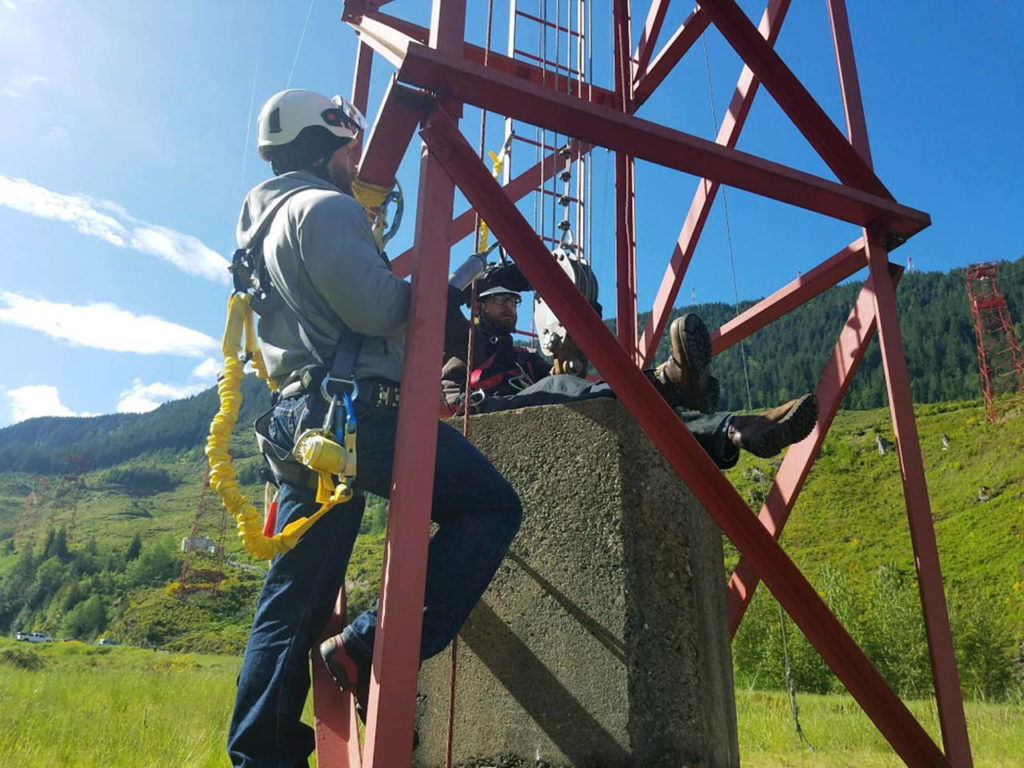ARLINGTON — You don’t want to be on this list.
A saber-rattling Russian TV news broadcast on Sunday featured potential targets for submarine-launched nuclear missiles. Along with the Pentagon and Camp David near the other Washington, there was something closer to home: Naval Radio Station Jim Creek.
The radio station, surrounded by forest in the Cascade foothills about 10 miles east of Arlington, provides command-and-control communications for the Pacific submarine fleet. It was one of five sites that TV host Dmitry Kiselyov identified in a segment on the weekly news show “Vesti Nedeli.”
Naval Radio Station Jim Creek was built in 1953. According to an official Navy blog, it’s among only a handful of very-low-frequency radio transmitters capable of communicating with warships, submarines and aircraft. The station has an elaborate antenna — an array of cables and wires hanging over a valley surrounded by 5,000 acres of forest. The facility also anchors a recreation area used mostly by military personnel.
Stateside experts said the menacing Russian broadcast should give no new reason to worry.
“At first blush, I do not see why the folks in Snohomish County should have any additional fear compared to the situation that already exists,” said Hal Undem, a retired Air Force lieutenant colonel who’s an affiliate professor at the University of Washington’s Jackson School of International Studies. “… I am guessing that the dramatic Russian announcement is just a reminder from the Russian government to U.S. citizens that ‘nuclear war involves you.’ From the Russian government to U.S. government perspective, I am guessing that the Russian press release simply is stating something like, ‘What you can do to us, we can do to you,’ which was a standard proverb throughout (the) Cold War.”
Russian President Vladimir Putin has expressed displeasure at the U.S. decision to withdraw from a key nuclear arms pact earlier this year. U.S. officials said that Russian violations prompted them to leave the 1987 agreement known as the Intermediate-Range Nuclear Forces Treaty.
To Undem, it appears that Russia is trying to signal that it could strike coastal targets within five minutes with a new type of hyper-sonic missiles the country claims to be developing. That compares to the 20 or so minutes with less-advanced systems. That would match what the United States might be able to accomplish by placing new weapons in Europe.
“I think it’s a deterrent posture,” the professor said. “The only difference in the situation is that they’re going to hit the same targets that are already on the target list.”
Other targets mentioned in the broadcast included military installations that have closed: Fort Ritchie in Maryland and McClellan Air Force Base in California.
Reuters published initial English-language reports on the Russian broadcast.
Pentagon spokesman Eric Pahon said he wasn’t losing any sleep over the rhetoric.
“This is what the Russians do — attempt to re-shape the world order through intimidation and misinformation,” Pahon said in an email. “We’re clear-eyed to the tactic and it doesn’t work. Every time Putin issues bombastic threats and touts his new doomsday devices, he should know he only deepens NATO’s resolve to work together to ensure our collective security. These reports on Russian state-owned television are a continuation of Russia’s propaganda effort to avoid responsibility for Russia’s actions in violation of the INF Treaty.”
Noah Haglund: 425-339-3465; nhaglund@heraldnet.com. Twitter: @NWhaglund.
Talk to us
> Give us your news tips.
> Send us a letter to the editor.
> More Herald contact information.


























